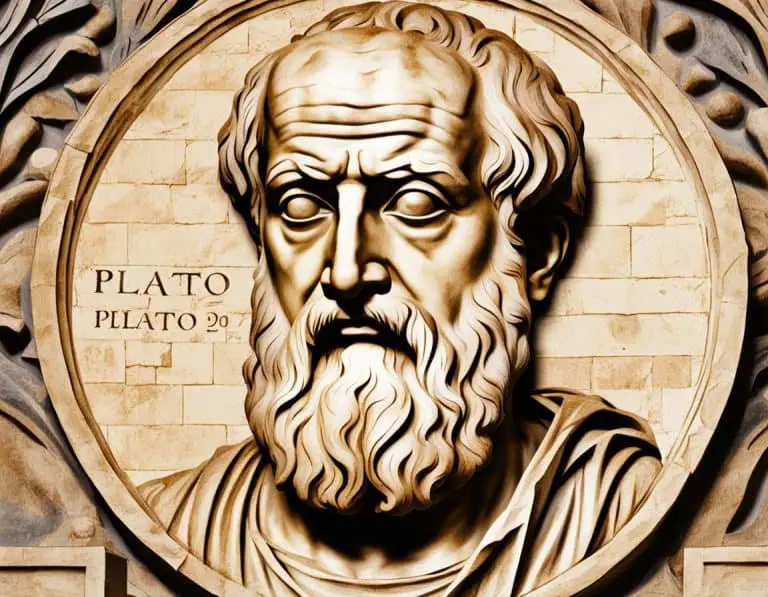Plato’s Sophist
Plato’s “Sophist” delves into the intricacies of philosophical inquiry, particularly focusing on the nature of being versus non-being. In this dialogue, Plato explores the concept of existence and non-existence, emphasizing the importance of distinguishing between true reality and mere appearance. The Sophist challenges readers to question their perceptions of the world around them and to seek a deeper understanding of the essence of existence.
Through thought-provoking dialogues and intellectual debate, Plato’s “Sophist” encourages readers to critically analyze the nature of reality and existence. By examining the intricate philosophical arguments presented in the text, readers are compelled to ponder the fundamental questions of truth, existence, and knowledge. Plato’s exploration of metaphysical concepts in the “Sophist” continues to influence and inspire philosophical discussions in the realm of Western philosophy.
Concept of Being vs. NonBeing
One of the most profound philosophical discussions in Plato’s Sophist revolves around the contrasting concepts of being and non-being. Within this dialogue, Plato skillfully navigates the complex terrain of existence, delving into the essence of reality and the nature of falsehood. The dialogue is a riveting exploration of the metaphysical realm, with Plato challenging readers to critically analyze the fundamental principles that underpin our understanding of the world.
Plato’s exploration of being and non-being in Sophist goes beyond mere intellectual exercise; it pushes readers to confront the timeless question of what truly constitutes existence. By dissecting the nature of truth and illusion, Plato forces us to reexamine our perceptions and beliefs, leading us to a deeper understanding of the complexities of reality. Through thought-provoking dialectics and intricate logic, Plato’s Sophist stands as a testament to his enduring influence on Western philosophy.
Plato’s Timaeus
Plato’s “Timaeus” delves into the realms of cosmology and physics, offering an elaborate account of the creation of the universe. In this work, Plato presents the idea of a divine craftsman, the Demiurge, who shapes the physical world based on eternal and unchanging forms. Through a series of geometric principles and mathematical proportions, the Demiurge constructs the cosmos as a harmonious and ordered entity, reflecting the perfection of the higher realms.
Moreover, in “Timaeus,” Plato explores the concept of the soul and its relationship to the body. He introduces the notion of a tripartite soul consisting of reason, spirit, and desire, each with distinct functions and characteristics. Through his intricate dialogue, Plato raises profound questions about the nature of reality, the role of the divine in creation, and the eternal truths that govern the universe.
Cosmology and Physics
Plato’s dialogue, Timaeus, delves into the realm of cosmology and physics, presenting a detailed account of the creation of the universe. In this work, Plato introduces the concept of the Demiurge, a divine craftsman responsible for shaping the physical world in accordance with eternal forms. The Demiurge acts as the supreme intelligence and brings order and structure to the universe, illustrating Plato’s belief in a designed and purposeful cosmos.
Moreover, in Timaeus, Plato presents a complex account of the elements and their interactions, offering a unique perspective on the nature of reality. He posits that the fundamental constituents of the universe are composed of geometrical shapes, emphasizing the role of mathematical order in the physical world. Through this exploration of cosmology and physics, Plato not only provides a framework for understanding the natural world but also lays the foundation for the integration of mathematics and philosophy in Western thought.
Plato’s Philebus
Plato’s Philebus delves deep into the eternal debate on pleasure versus wisdom. The dialogue revolves around the fundamental question of what constitutes the ultimate good in life. Plato, through the characters of Socrates and Protarchus, explores the concept of pleasure and its significance in relation to wisdom. The discourse challenges the notion that pleasure alone can lead to a fulfilling and virtuous life, proposing instead that a balance between pleasure and wisdom is essential for true happiness.
In Philebus, Plato offers a profound analysis of human experiences and the pursuit of knowledge. He argues that an excess of pleasure can cloud one’s judgment and lead to irrational decisions, ultimately hindering the path to true wisdom. By emphasizing the importance of rationality and deep intellectual reflection, Plato highlights the intrinsic value of cultivating wisdom in order to attain a higher state of being. Through this dialogue, Plato invites readers to contemplate the delicate interplay between pleasure and wisdom, encouraging introspection and self-examination in the quest for a more fulfilling existence.
Discussion on Pleasure and Wisdom
Plato’s dialogue “Philebus” delves into a profound discussion on the eternal debate between pleasure and wisdom. In this work, Plato explores the nature of true happiness and the role that pleasure and wisdom play in achieving a well-lived life. Through the characters of Socrates and Philebus, Plato presents contrasting views on what constitutes the highest good for human beings.
While Philebus argues that pleasure is the ultimate goal that all humans seek, Socrates challenges this notion by proposing that true wisdom and intellectual pursuits lead to a more fulfilling existence. Plato skillfully navigates this dialectic, forcing readers to contemplate the interplay between momentary gratification and long-term fulfillment. Ultimately, “Philebus” serves as a thought-provoking piece that forces us to reconsider our values and priorities in the pursuit of a meaningful life.
Related Links
Why Plato’s Influence on Western Philosophy is Significant
How to Analyze Plato’s Impact on Western Philosophy
